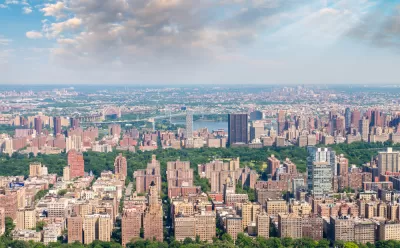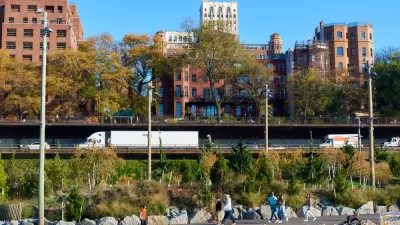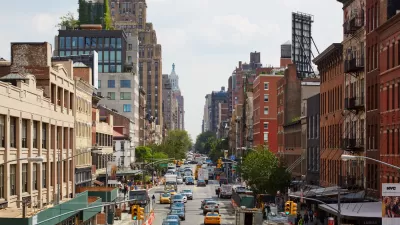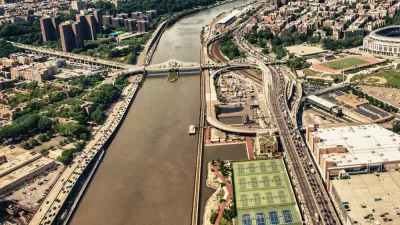New York City's Green Roof Property Tax Abatement Program has failed to take off, but if it were targeted toward the areas that need stormwater infrastructure and green spaces the most, it could be made too big to ignore.

A tax incentive for green roofs in America's most populated city been used seven times in nine years. Meanwhile the city spends millions dealing with stormwater, which can flood sewers and bring raw sewage up to the city streets. "The city is failing to take advantage of a perfectly good solution to this. By transforming barren roofs into verdant spaces, we can improve water quality, slash energy use, foster biodiversity and provide more enjoyable space," write Scott Stringer and Danielle Spiegel-Feld.
New York, like many large American cities, offers a tax credit to encourage the creation of green roofs, but that hasn't been much help. The city has only awarded its credit seven times in the nine-year existence of the Green Roof Property Tax Abatement Program. The state government allocated a million dollars a year to the city to support this initiative, but the city has struggled to use anywhere near that amount.
"The program should be restructured to provide a more targeted tax credit to a rotating group of neighborhoods that struggle with regular sewer overflows or a lack of green space," Stringer and Spiegel-Feld argue. Targeting specific neighborhoods could allow the city to offer more generous incentives and bring the roofs to the areas of the city that need them the most.
FULL STORY: Greening the city from the top down

Planetizen Federal Action Tracker
A weekly monitor of how Trump’s orders and actions are impacting planners and planning in America.

Congressman Proposes Bill to Rename DC Metro “Trump Train”
The Make Autorail Great Again Act would withhold federal funding to the system until the Washington Metropolitan Area Transit Authority (WMATA), rebrands as the Washington Metropolitan Authority for Greater Access (WMAGA).

DARTSpace Platform Streamlines Dallas TOD Application Process
The Dallas transit agency hopes a shorter permitting timeline will boost transit-oriented development around rail stations.

San Francisco's School District Spent $105M To Build Affordable Housing for Teachers — And That's Just the Beginning
SFUSD joins a growing list of school districts using their land holdings to address housing affordability challenges faced by their own employees.

Car-Centric LA Suburb Looks to a Train-Oriented Future
City leaders in Rancho Cucamonga, the future western terminus of the Brightline West rail line to Las Vegas, want to reimagine the city as a transit-oriented, pedestrian-friendly community.

New Alaska Bitcoin Mine Would Burn as Much Energy as the State’s Largest Coal Plant
Fueled by “stranded” natural gas, the startup hopes to become the largest in the US, and to make Alaska an industry center.
Urban Design for Planners 1: Software Tools
This six-course series explores essential urban design concepts using open source software and equips planners with the tools they need to participate fully in the urban design process.
Planning for Universal Design
Learn the tools for implementing Universal Design in planning regulations.
Municipality of Princeton
Roanoke Valley-Alleghany Regional Commission
City of Mt Shasta
City of Camden Redevelopment Agency
City of Astoria
Transportation Research & Education Center (TREC) at Portland State University
US High Speed Rail Association
City of Camden Redevelopment Agency
Municipality of Princeton (NJ)





























